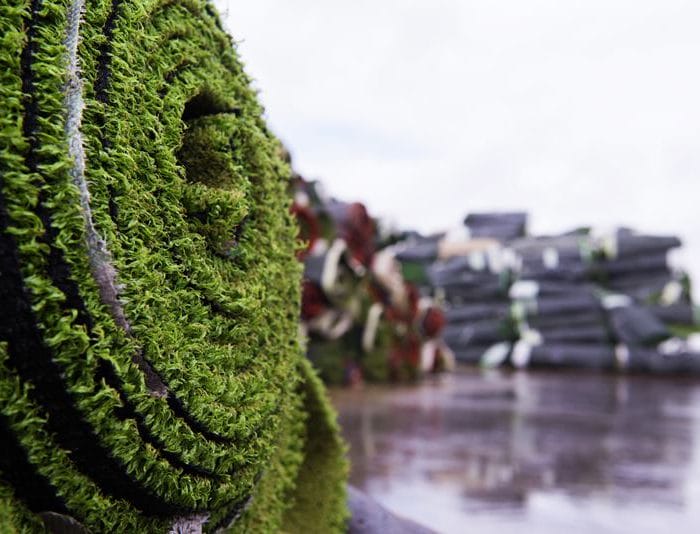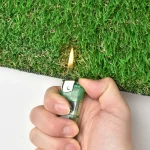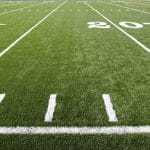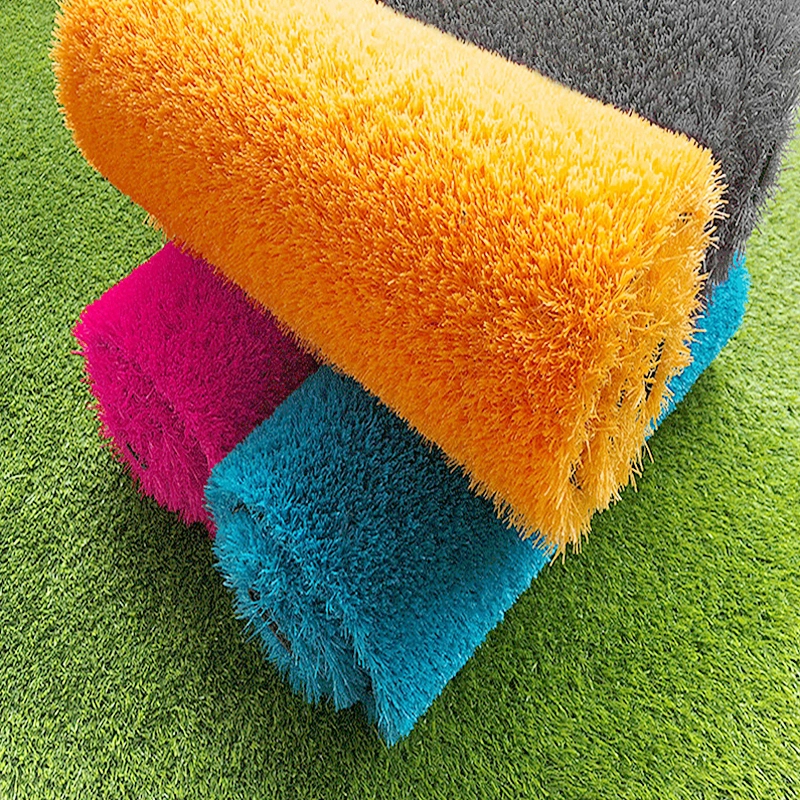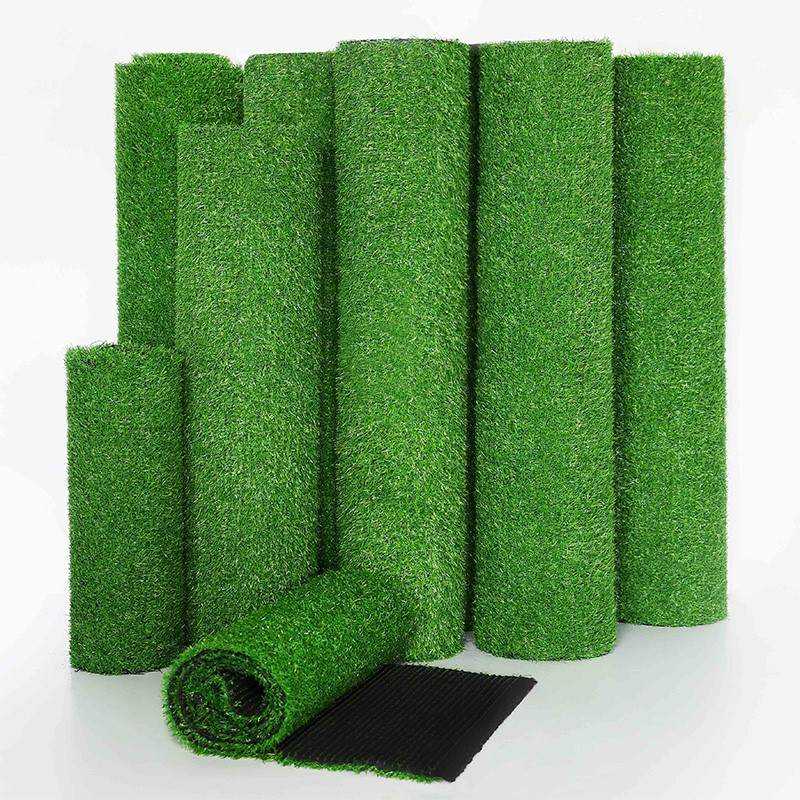
Artificial turf recycling involves the process of reclaiming and reusing materials from old or worn-out synthetic turf fields or installations. Recycling artificial turf helps mitigate environmental impact by diverting waste from landfills and promoting sustainability. Here’s an overview of the artificial turf recycling process:
1. Removal and Collection:
- The first step in artificial turf recycling involves the removal and collection of old turf from sports fields, playgrounds, or landscaping installations. Specialized equipment is often used to cut and roll up the turf in sections for transportation.
2. Separation of Components:
- Once collected, the artificial turf undergoes a process where various components are separated. This separation involves detaching the turf fibers (polyethylene or polypropylene) from the backing material (often made of polyurethane or latex).
3. Recycling of Components:
- The separated components are processed for recycling. The turf fibers, which constitute the majority of the material, are commonly recycled into various products, including mats, bags, carpeting, and even new artificial turf. The backing material might undergo recycling to create materials suitable for other applications.
4. Reuse or Repurposing:
- Recycled artificial turf materials are often used in innovative ways. Reclaimed turf fibers can find applications in industries beyond landscaping or sports, contributing to the creation of eco-friendly products.
5. Environmental Benefits:
- Artificial turf recycling helps reduce waste sent to landfills, conserves resources by reusing materials, and minimizes the environmental impact associated with manufacturing new synthetic turf. It supports sustainability efforts by promoting a circular economy approach.
Challenges and Considerations:
- Despite the benefits, challenges exist in the recycling process. For instance, not all components of artificial turf are easily recyclable due to the mixture of materials used in their construction. Some turf systems contain infill materials made of rubber or sand, which can complicate the recycling process.
Industry Efforts and Innovations:
- Efforts within the industry focus on developing more recyclable materials and improving recycling techniques to address these challenges. Innovations in turf design and materials aim to create systems that are easier to dismantle and recycle at the end of their life cycle.
Conclusion: Artificial turf recycling plays a crucial role in the sustainable management of synthetic turf waste. As the demand for artificial turf continues to grow, advancements in recycling methods and technologies are essential to ensure a more environmentally friendly approach to the disposal and reuse of these materials.
By promoting artificial turf recycling, stakeholders can contribute to reducing environmental impact, conserving resources, and moving towards a more sustainable and circular approach in the synthetic turf industry.


